
A "relaxed-eye" stereo-pair looking up into the spire of a church

A shark catching fish
With a “relaxed-eye” stereo-pair the left-eye picture is mounted on the left and the right-eye picture on the right, and the eyes look straight at the respective pictures.
Suppose that you are standing in the middle of a church, looking up from the floor at the structure of its spire. In the left-eye view the middle part, the highest, will be slightly left of centre; in the right-eye view it will be slightly right of centre. Laid side by side, the left- and right-eye views will be as shown below. Lower your head towards the middle of the diagram until it is close to your eyes. Relax all your eye muscles (breathe out). Allow your eyes to see three blurred squares. Forget the two outer ones on the edge of your field of view. Just look at the middle square. Now slowly move your head away to a comfortable distance. The middle square will come into focus. You will see up into the church spire, the inner circle far above, then the middle circle, with the outer frame quite close above your head. The flat screen yields a wonderful impression of depth.



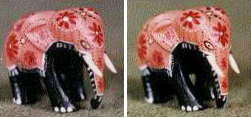

Relaxed-eye stereo-pairs are fairly common. They appear sometimes in the journals Nature and Science for illustrations of the structures of complicated chemicals. They are limited in that the size of each image can be no greater than the separation between a person’s eyes, about 65 mm.
Photographic prints are commonly 12 cm wide, and we want to see these as stereos.
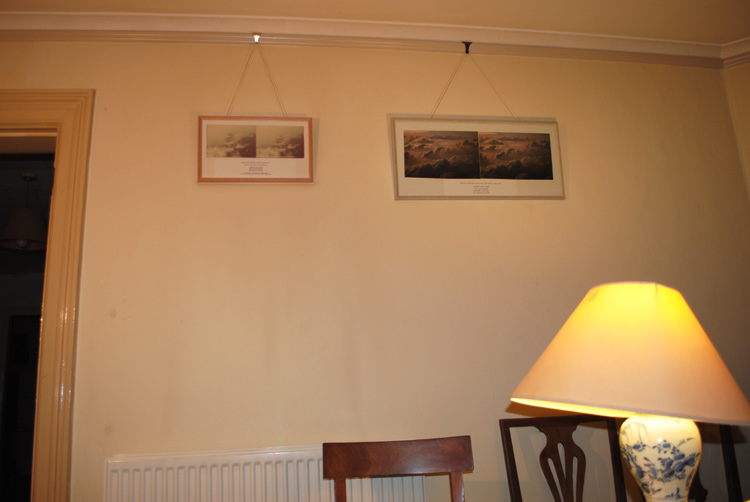
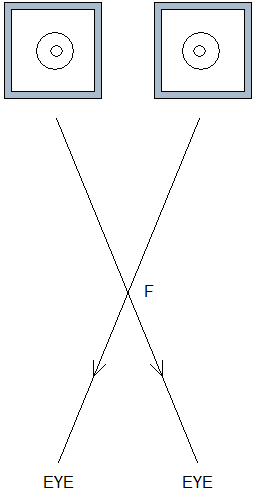
The view up into the church spire picture is now presented with the left-eye picture on the right. Underneath is shown the path of rays of light to each eye. Focusing is on the pictures, while rays cross at F, nearer to the eyes. Crank in the muscles which point the eyes as though squinting at something close up, but keep the focusing muscles more relaxed, as appropriate for normal comfortable focusing. Once you have learned the conditioned reflex, cross-eye viewing is like simply flicking a switch from normal to stereo settings. The brain locks on to the stereo.

Hold up your two thumbs in front of you side by side. Squint a little and make three thumbs.
Relax your focusing and see the middle thumb in focus. This is the same as seeing a stereo-pair.
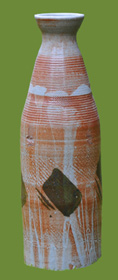
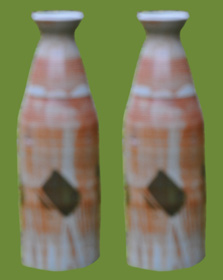
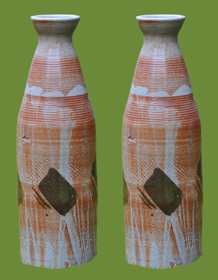
Cross-eye viewing imposes no special strain on your eyes. Close study, as for needlework or watch repair, requires both crossing your eyes and focusing them closely. Cross-eye viewing involves crossing your eyes as for close work, but focusing at the normal comfortable range. It is less strenuous. (If you do have any problem, just go to a dark place for a few minutes.)
Returning to the shark and viewing him cross-eye, we find that the two escaping fish are closer, rather than further away from the observer.
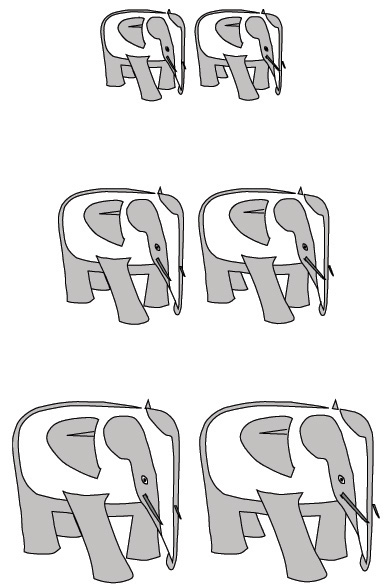
The frontispiece of this book shows three pictures (LRL) of Baba the elephant, as do others below. On the left is a left-eye view, in the middle a right-eye view, and on the right a left-eye view again. If the picture on the right is blanked off, the two pictures on the left form a relaxed-eye stereo-pair. If the picture on the left is blanked off, the other two form a cross-eye stereo-pair. I have made small cards like this to facilitate learning to see stereos. They have to be small because relaxed-eye viewing demands a picture size no greater than eye separation, 65 mm.
The following photographs illustrate some of the wonderful merits of stereo-pairs. Some of these are relatively easy to see in stereo, with one central group of objects. Post up a stereo-pair in a place where you will see it when you look up from your work. Try stereo viewing now and again for no more than a few seconds at a time. Do not expect early success. If it gets tiresome, change the stereo for a different one. Just keep having a go in absent-minded moments.
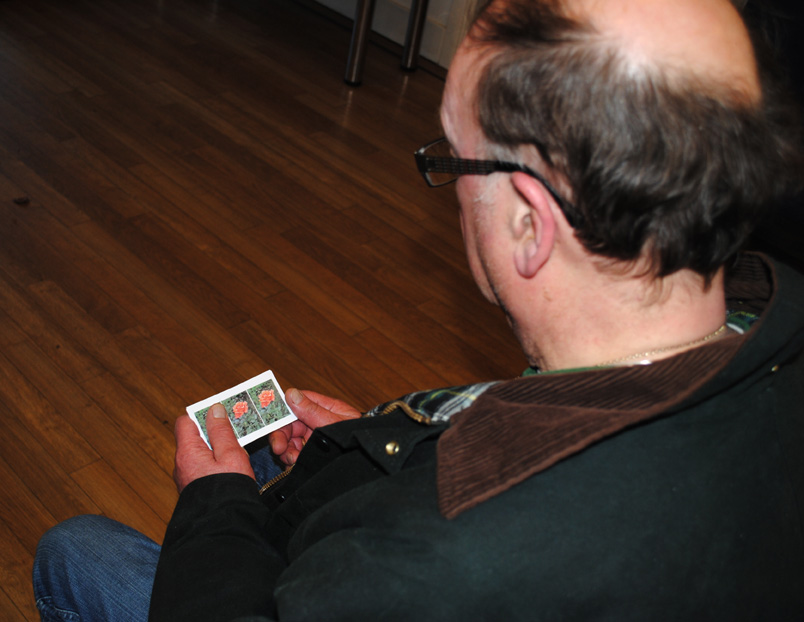
Some people put up a stereo for a while, but later take it down. Not being able to see the stereo becomes irritating; it becomes a painful suggestion of failure and personal inadequacy, so it gets swept away. This tendency must be resisted. The new reflex may be found quickly or it may take some time. Do not worry about it, or make special efforts. Just let it happen, however long it takes.
"But I don't want to see stereos," said Alice.
"Oh you can't help that," said the Cat; "we all see them here - relaxed-eye, cross-eye."
"Relaxed-eye sounds better to me ..," muttered Alice.
"It would if you're lazy," said the Cat.
"I'm not lazy! I don't want to get cross," argued Alice.
"You can't see relaxed-eye and cross-eye at the same time," said the Cat;
"you have to choose which way you want."
"But I don't want ..," said Alice.
"You have to want something," said the Cat.
"But why .."
"Just try crossing your eyes - I can," the Cat went on.
After some attempts Alice did acquire a cross-eye stereo.
"Actually I find that quite straightforward," she said.
"Just like everybody else," added the Cat. "Wonderland awaits."